In response to this week’s Fairfax-ReachTel poll, which found that two-thirds of Sydney’s population believe Sydney is full and that its growth should stop (read here), Chris Johnson from the Urban Taskforce – “a non-profit organisation representing Australia’s most prominent property developers and equity financiers” – has penned the following spurious response. From The SMH:
I suspect… that the growth Sydney is experiencing is bringing a different way of life to the suburban lifestyle many are used to.
While population growth is among the threats to our lifestyle there are many other factors that have changed over the past 50 years.
First, our houses have got bigger. Research by Robert Crawford and Andrew Stephan of the University of Melbourne found that the average house size in 1950 was 100 square metres but today the average house is 240 square metres. Yet the average number of people in a house has dropped significantly since 1950 when the average area was 30 square metres per person. Today this has jumped almost three times to an average of 87 square metres per person.
With this figure Australia is leading the world, according to the “Shrinkthatfootprint.com” site, which lists the US at 83 square metres per person, Denmark at 70, Germany at 59, and Britain at 35 square metres per person. We have a very affluent society with the biggest suburban houses in the world.
We cannot continue this way. Having the largest houses also means they are the most expensive in the world. The housing affordability problem in Sydney is directly linked to the fact that the existing owners of large suburban homes have forced the price of the average home up to a level where the next generation cannot afford them…
Those who have reaped the benefits of the suburban model of living would prefer the status quo but their children and their grandchildren are not only comfortable with change but crying out for it. Putting up the “Sydney is full” sign won’t help these people – planning will.
As Sydney heads towards a population of eight million people we will reach the size that London and New York are now. These major cities have already crossed the threshold from a suburban to an urban model and this is Sydney’s destiny as well.
Let’s debunk this “largest houses in the world” myth once and for all.
First, the way Australia measures home sizes differs from other places.
Specifically, the ABS measures floor area as:
…the amount of useable space in a building (and its attachments) at the final stage of its construction and is measured in square metres (m²). The boundary of the recorded floor area of a building is delineated by the external perimeter of the exterior walls of the building. The area under unenclosed verandahs, carports, etc., attached outside the exterior walls of one or more storeys, is excluded.
Since the early-1990s, there has been an increasing trend towards attached garages (see example below), whereas previously most new houses built car ports instead.
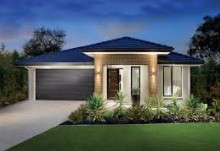
Under the ABS’ definition, such garages would be included as floor space, whereas car ports are not. Accordingly, Australian home sizes have been biased upwards, giving the impression that we have super-sized our homes, even though actual living space has likely risen far more moderately (if at all).
It is also worth noting for comparative purposes that the United States – claimed by Johnson as having the second biggest new homes in the world – does not include attached garages in its floor area measurements.
Even with this biased definition, the floor space of Aussie homes has shrunk considerably in size since the GFC and are now way below those of the USA:
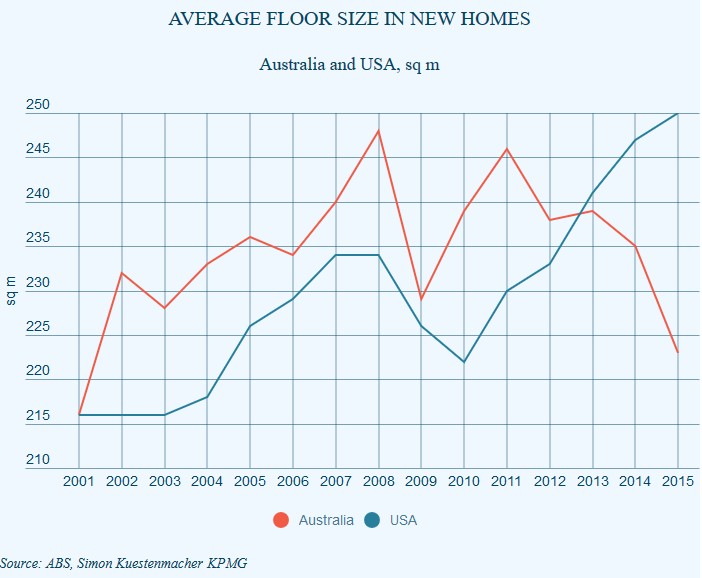
Remember, too, that the states in the USA with the biggest houses (e.g. Texas) also tend to have some of the cheapest housing. This directly counters Johnson’s claim that so-called big homes in Australia are the driver of our expensive housing.
With regards to Sydney specifically, Johnson has conveniently ignored the massive shift towards shoebox living, whereby where two-thirds of dwelling approvals across the city are now units & apartments:
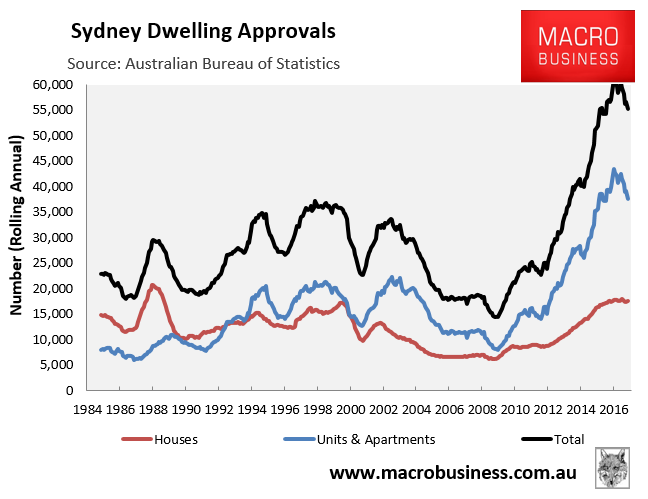
An noted by the 2016 Census, because apartments are so much smaller than detached houses, they house less people, with the average number of people counted per apartment on Census night at 1.9 versus 2.8 for detached houses.
Moreover, one-in-five residents in New South Wales are already living in apartments, with the share obviously much higher in Sydney given it accounts for 90% of the state’s apartment stock:
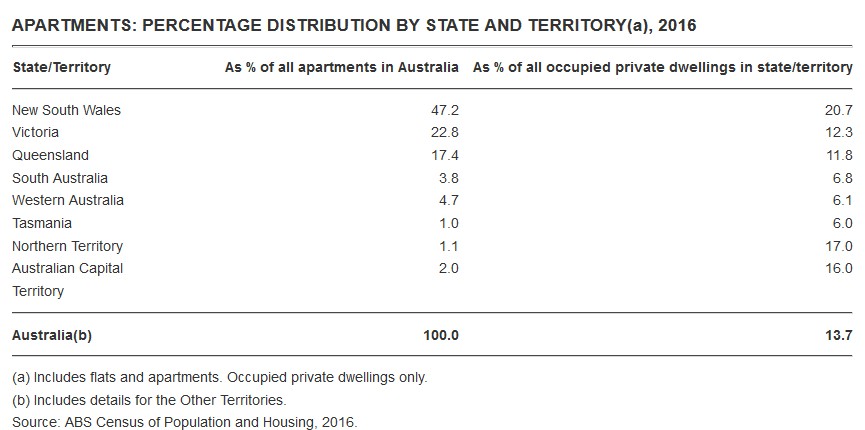
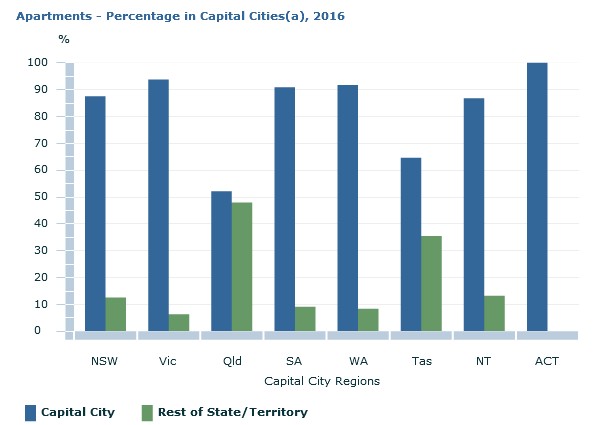
Finally, Chris Johnson has conveniently ignored the fact that the size of the median lot in Sydney has undergone massive shrinkage, as it has across Australia:
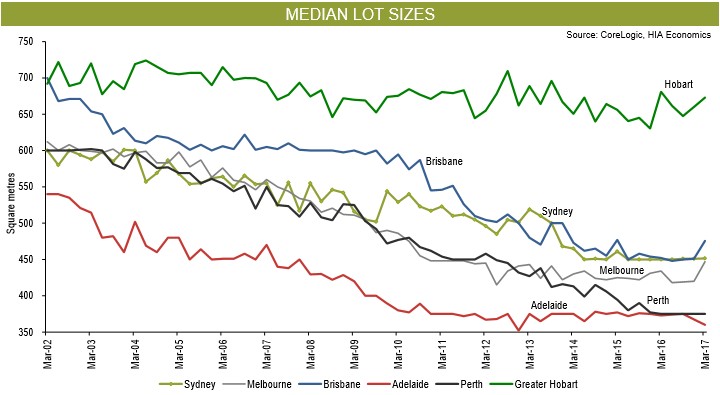
At the same time as the price per square metre has risen to insane levels, especially in Sydney:
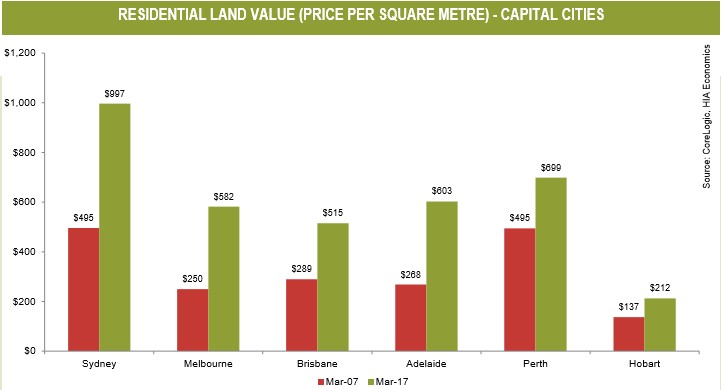
Clearly, the claim that Sydney is expensive because it is too suburban with massive homes is a myth. It has built a huge number of small shoebox apartments, whereas the median lot size has also shrunk. Sydneysiders are paying far more for housing but receiving less in return.
Like all vested interests in this debate, Chris Johnson has assumed that a Sydney at 8 million people is the city’s “destiny” and set in stone, rather than a direct policy choice.
The NSW Government’s own population projections show that Sydney’s population growth (87,000 people a year) will be driven overwhelmingly by net overseas migration (76,500 people a year):
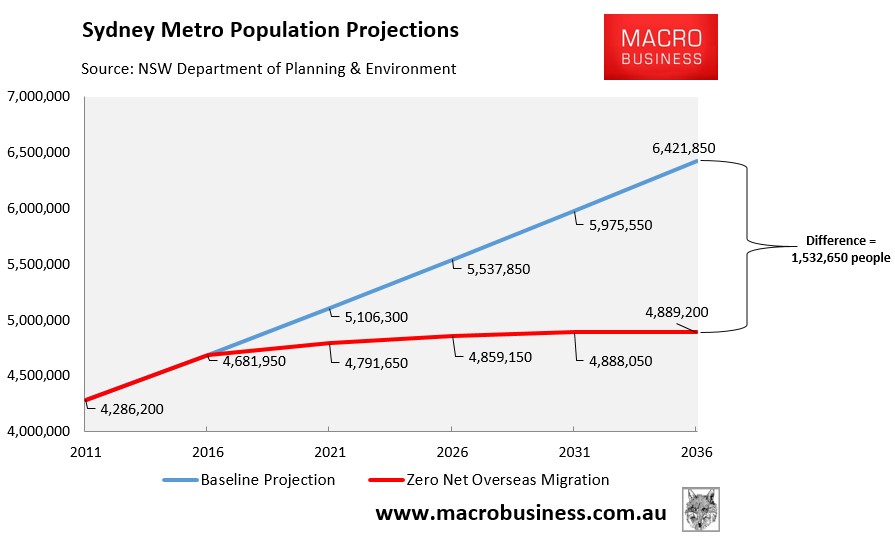
As shown above, Sydney’s population would grow by only 210,000 people over the next 20 years with zero net overseas migration, versus growth of 1,739,900 people under the federal government’s current mass immigration settings – a difference of 1,532,650 people.
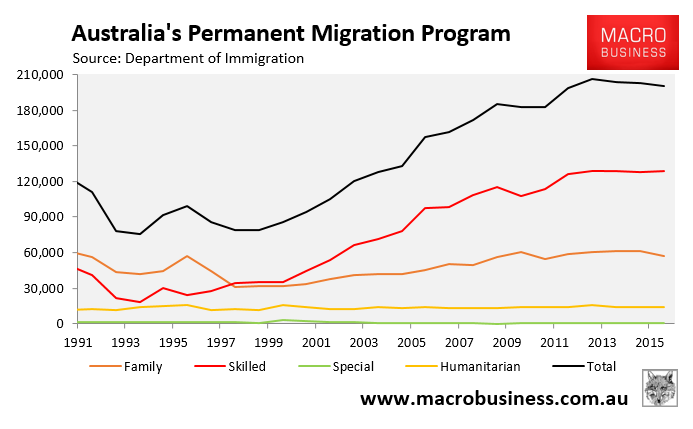
Hence, Sydney’s future population size and urban form is primarily dependent on the federal government’s immigration intake. If the immigration intake was, say, halved back to something closer (but still above) the historical average, this would be the difference between a Sydney of 6-6.5 million people mid-century versus a population of 8 million, as currently projected.
Sydneysiders are not stupid. They know that extreme immigration-fueled population growth is destroying their living standards, with roads, public transport, schools and hospitals all crush-loaded and housing becoming hideously expensive (and of lower quality).
They are correct to resist such extreme growth, which is makes little sense economically, socially or environmentally.

